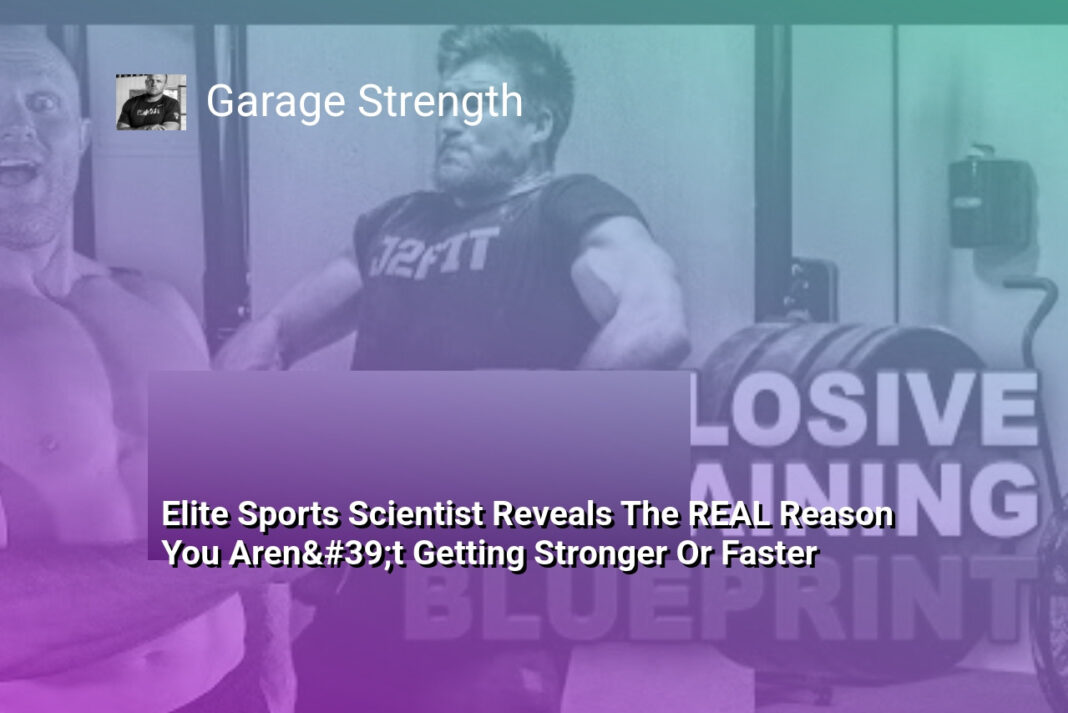The Bottom Line:
- I discovered that establishing a comprehensive warm-up routine is crucial for preparing the body for intense weightlifting, focusing on mobility and muscle activation techniques.
- My training approach now prioritizes fewer, more targeted exercises with strategic set structures to maximize strength development and prevent workout inefficiency.
- I’ve learned to integrate diverse weightlifting techniques from different strength disciplines, which helps enhance overall athletic performance and muscular adaptation.
- Rest periods and recovery have become a critical component of my training, with carefully timed intervals between sets to optimize muscle recruitment and prevent fatigue.
- My long-term fitness journey now emphasizes technique, consistency, and personal growth over simply chasing numerical achievements in strength training.
Essential Warm-Up Strategies for Peak Performance
Dynamic Mobility and Activation Techniques
Effective warm-up strategies begin with targeted mobility work that prepares the body for intense lifting sessions. Athletes should focus on dynamic movements that activate key muscle groups and improve range of motion. Incorporating PVC pipe mobility drills helps release tension in the shoulders, thoracic spine, and hips. Single-leg Romanian deadlifts (RDLs) are particularly effective for establishing trunk control and enhancing stability. These preparatory exercises prime the neuromuscular system, improving overall movement quality and reducing injury risk.
Progressive Warm-Up Protocol
A strategic warm-up involves a progressive approach to increasing body temperature and muscle readiness. Start with light cardiovascular movements to elevate heart rate, followed by specific mobility exercises targeting the muscle groups involved in your primary lifts. Isometric holds for hip and quad activation can significantly improve muscle recruitment and neural pathways. Gradually increase the intensity of warm-up sets, using lighter weights to practice movement patterns and technique before loading heavier weights.
Technique-Specific Preparation
Different lifting disciplines require nuanced warm-up approaches. For powerlifting, focus on movements that mimic competition lifts with reduced intensity. This might include bar path practice, technique drills, and light sets that groove proper movement patterns. Weightlifters should incorporate specific technical elements like clean pulls or snatch-grip movements to activate sport-specific muscle groups. The key is to create a warm-up routine that not only prepares the body physically but also mentally primes the athlete for peak performance. Maintain a consistent approach, typically spending 15-20 minutes on comprehensive warm-up protocols that address mobility, activation, and technical preparation.
Structured Powerlifting Program Design
Strategic Exercise Selection and Volume Management
Designing an effective powerlifting program requires meticulous planning and strategic exercise selection. The core principle involves focusing on 3-5 key exercises per workout, ensuring each session maximizes strength development potential. By limiting exercise variety, athletes can concentrate on perfecting technique and progressively overloading fundamental movements like squats, bench press, and deadlifts. Volume management becomes critical, with recommended set ranges between 6-7 sets per primary movement to optimize muscle adaptation and neurological recruitment.
Progressive Overload and Periodization Techniques
Successful powerlifting programs integrate progressive overload principles with sophisticated periodization strategies. Athletes should systematically increase training intensity by incrementally adding weight, adjusting repetition schemes, or manipulating rest periods. Implementing variations like high bar squats and incorporating weightlifting-specific movements such as clean pulls can enhance overall strength development. These cross-disciplinary techniques help athletes break through plateaus and stimulate comprehensive muscular adaptation.
Recovery and Performance Optimization
Optimal performance in powerlifting demands strategic recovery protocols. Rest periods between sets should range from 2.5 to 4 minutes, allowing sufficient neurological and muscular recovery. Accessory work should maintain workout intensity with controlled rest intervals of 60-90 seconds. Incorporating targeted warm-up routines, including single-leg Romanian deadlifts and isometric holds, prepares the body for heavy lifting while improving trunk stability and muscle activation. Individual preferences, such as using lifting straps or specific technique modifications, should be respected to create a personalized and sustainable training approach.
Advanced Weightlifting Technique Integration
Strategic Movement Pattern Optimization
Advanced weightlifting requires precise integration of complex movement patterns that transcend traditional lifting techniques. Athletes must develop neurological adaptations that enhance muscle recruitment and synchronization across multiple muscle groups. By systematically breaking down complex lifts into granular components, lifters can identify and rectify biomechanical inefficiencies that limit overall performance. This approach demands meticulous attention to joint angles, muscle activation sequences, and force transmission pathways during fundamental lifts like squats, deadlifts, and Olympic variations.
Progressive Technique Refinement Strategies
Implementing a deliberate technique refinement process involves utilizing video analysis, biomechanical assessments, and targeted mobility work. Elite lifters consistently deconstruct their lifting mechanics, examining micro-movements that contribute to overall lift efficiency. Incorporating variations like pause squats, deficit deadlifts, and complex training methodologies allows athletes to challenge neuromuscular systems and develop enhanced proprioceptive awareness. The goal is creating seamless movement patterns that maximize force production while minimizing energy leakage during critical lifting phases.
Interdisciplinary Strength Development Approach
Cross-disciplinary training techniques play a crucial role in advanced weightlifting progression. By integrating movements from Olympic weightlifting, powerlifting, and functional strength domains, athletes can develop more comprehensive strength capabilities. This might include incorporating clean pulls, snatch-grip variations, and dynamic mobility exercises that challenge traditional lifting paradigms. Such an approach ensures holistic muscular development, improves inter-muscular coordination, and creates a more adaptable strength foundation that transcends singular lifting modalities.
Optimizing Rest Periods and Workout Intensity
Strategic Rest Interval Management
Rest periods are critical for muscle recovery and performance optimization during strength training. Different lifting movements require varied rest durations based on their intensity and muscle groups involved. For compound lifts like squats and deadlifts, longer rest intervals of 2.5 to 4 minutes are recommended to allow complete neural and muscular recovery. This enables athletes to maintain peak power output and technical precision across multiple sets. Shorter rest periods between 60-90 seconds are more suitable for accessory exercises, which help maintain workout momentum and metabolic stress.
Intensity Calibration Techniques
Calibrating workout intensity involves strategic manipulation of training variables. Prioritize heavy compound movements at the beginning of training sessions when neural recruitment and energy reserves are highest. This approach maximizes strength potential and ensures quality repetitions. Incorporate progressive overload principles by gradually increasing weight, reducing rest times, or modifying exercise variations. High-intensity techniques like drop sets, cluster sets, and tempo variations can further challenge muscular adaptation and prevent training plateaus.
Recovery and Performance Optimization
Effective rest management extends beyond inter-set recovery. Athletes must consider individual recovery capacities, incorporating active recovery techniques, proper nutrition, and adequate sleep. Monitor fatigue indicators such as reduced power output, compromised technique, or persistent muscle soreness. Implement deload weeks periodically to prevent overtraining and promote long-term strength development. Utilize technology and tracking tools to objectively assess performance metrics and adjust training intensity accordingly, ensuring a balanced approach to strength progression.
Long-Term Strength Training Development
Progressive Overload and Periodization Strategies
Developing long-term strength requires a systematic approach to training that goes beyond simple linear progression. Athletes must implement sophisticated periodization models that strategically manipulate training variables such as volume, intensity, and frequency. By cycling through different training phases—including hypertrophy, strength, and peaking cycles—lifters can continuously challenge their physiological adaptations and prevent plateaus. This approach ensures consistent neuromuscular development and minimizes the risk of overtraining or potential injuries.
Individualized Training Adaptation Protocols
Each athlete’s strength training journey is unique, demanding personalized programming that accounts for individual biomechanics, recovery capabilities, and genetic predispositions. Advanced strength development necessitates comprehensive assessments of movement patterns, identifying potential muscular imbalances, and creating targeted interventions. Utilizing technologies like force plate analysis, biomechanical screening, and comprehensive movement assessments allows coaches and athletes to design highly specific training protocols that optimize individual potential while mitigating injury risks.
Holistic Performance Enhancement Methodology
Sustainable strength training transcends mere weight progression, encompassing a multifaceted approach to athletic development. This methodology integrates nutrition strategies, recovery protocols, psychological conditioning, and technical skill refinement. Athletes must develop a comprehensive understanding of their body’s adaptive responses, learning to modulate training stress through intelligent programming. Incorporating elements like mobility work, corrective exercises, and strategic deload periods ensures continuous progression while maintaining long-term athletic resilience. By adopting a holistic perspective, strength athletes can create a robust foundation for sustained performance improvements across multiple training cycles.





